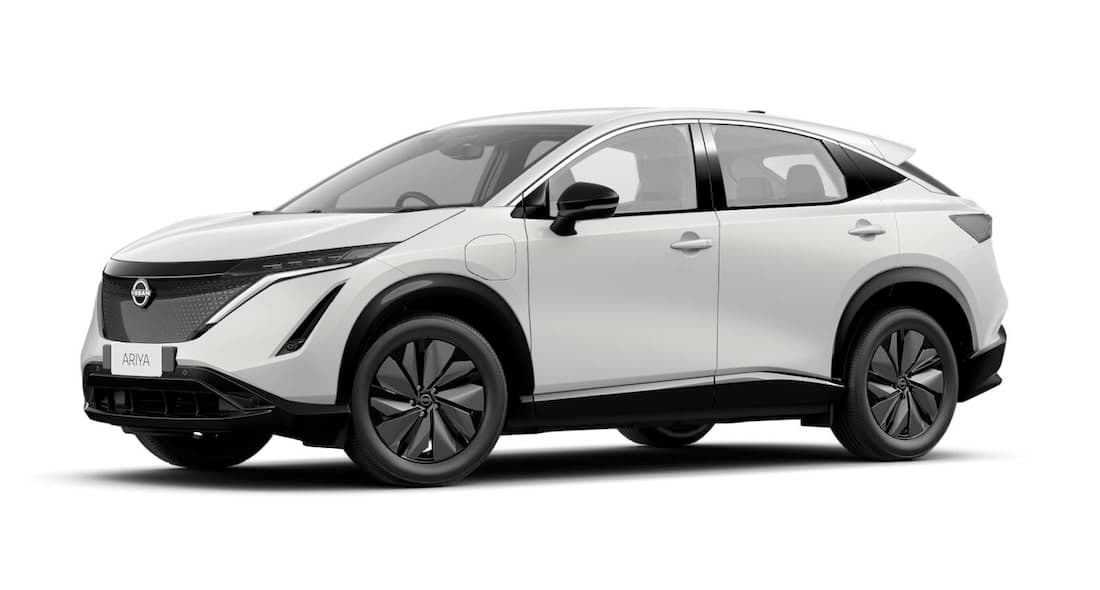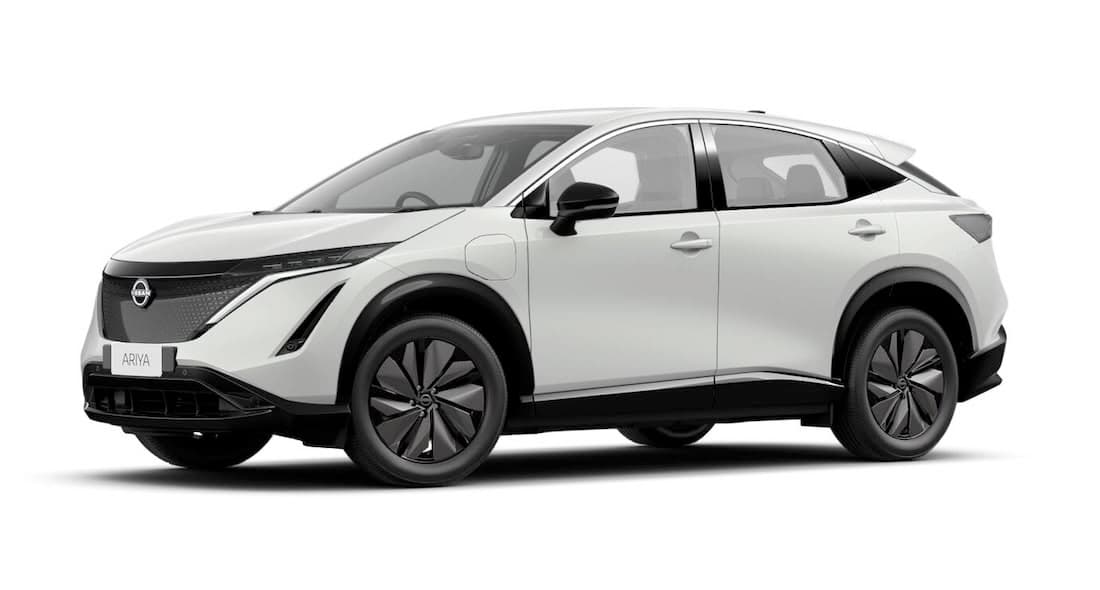Nissan Ariya

Price Range
$54,990 - $79,990
Range (WLTP)
398 - 497 km
Battery Size
66 - 91 kWh
Variants
The base version of the Ariya.
Performance
0-100 km/h
7.5 sTotal Power
160 kWTorque
300 NmTop Speed
160 km/hDrive
FWDRange & Efficiency
WLTP Range
398 kmWLTP Consumption
185 Wh/kmHighway Range
310 kmYour Real Range
Calculate Battery & Charging
Battery (nominal)
66 kWhBattery (usable)
63 kWhBattery type
NMCAC Charging
7.4 kWDC Charging
130 kWVehicle-to-Load (V2L)
NoDimensions & Weight
Length
4595 mmWidth
1850 mmHeight
1660 mmGround Clearance
170 mmWeight
1980 kgShape
Medium SUVSeats
5Storage & Towing
Boot Space
466 LBoot Space (Max)
1350 LFrunk
—Towing (Braked)
750 kgTowing (Unbraked)
750 kgHow many Nissan Ariya have been sold in NZ?
There have been 66 registered to date (including 4 used imports).
Nissan Ariya registrations
Monthly units (includes new and used import)

